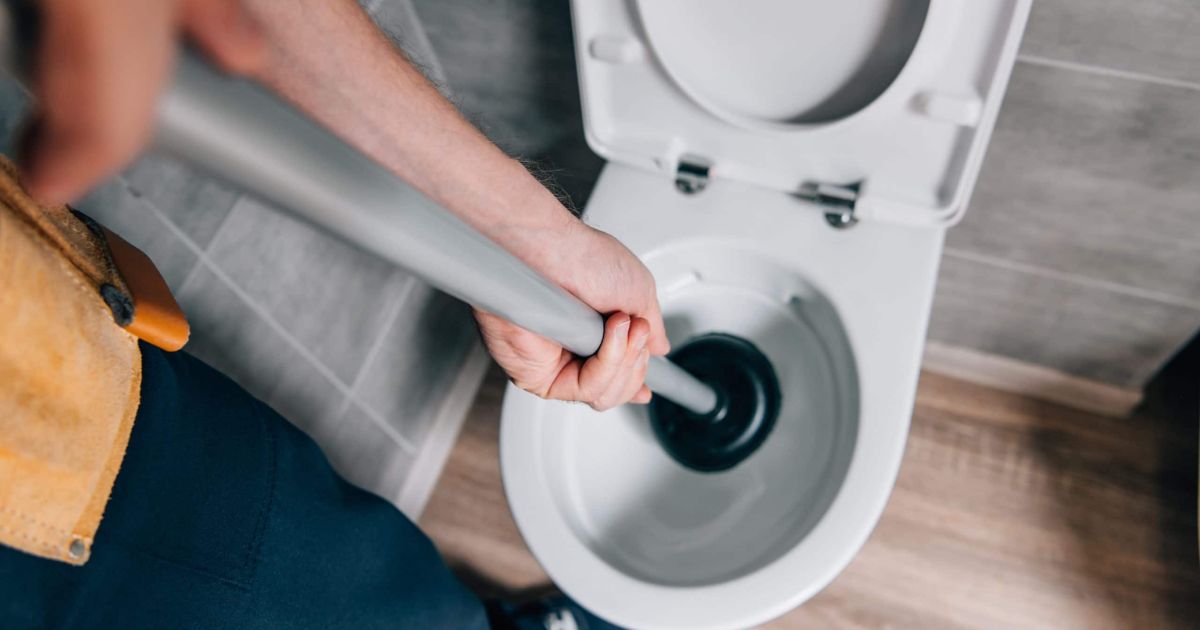There’s nothing quite like hitting the open road in your RV, taking in the scenery and making unforgettable memories. That is, until you encounter the dreaded clogged toilet. I still vividly remember the sinking feeling when my RV’s toilet refused to flush properly on a camping trip through the Rocky Mountains.
After unsuccessfully trying every trick in the book, I was at my wits’ end – until I finally uncovered the solution that saved the day (and my sanity). Clogged RV toilets are an all-too-common headache for RVers. The compact plumbing systems in RVs make them more prone to clogs than residential toilets.
But don’t fret, with the proper knowledge and tools, you can conquer even the most stubborn of toilet clogs. This comprehensive guide will walk you through the best methods I’ve discovered for unclogging an RV toilet, as well as crucial tips to prevent future backups from derailing your adventures.
This is What I Did to Unclog My RV Toilet
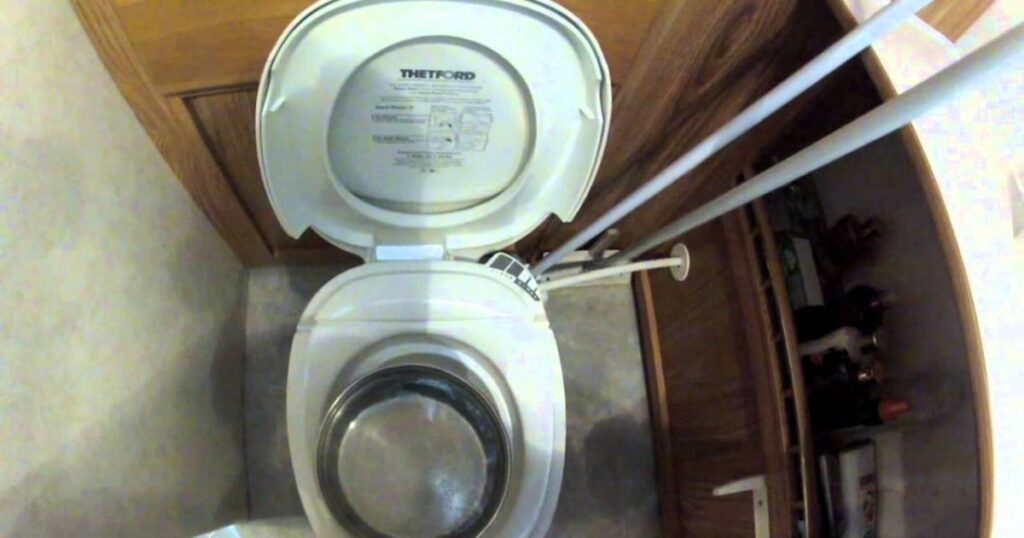
My RV toilet clog was caused by a buildup of toilet paper and solid waste that became firmly lodged in a bend of the drain pipe about a foot below the toilet bowl. Standard home remedies like drain cleaners and plungers were out of the question, as they can easily damage the more delicate RV plumbing system and void warranties.
After exhausting various unsuccessful tactics, I stumbled upon an unconventional but brilliant fix – using a short section of an old water hose. Here’s the step-by-step process that ultimately dislodged my stubborn clog:
- Shut off the water supply to the toilet.
- Open the toilet’s flush valve by pressing down on the foot pedal or using a special toilet valve tool. This gives you access to the drain.
- Gently insert the hose section into the toilet’s drain opening as far as it will go.
- Add a small amount of water to the toilet bowl to lubricate the clog area.
- Carefully push and twist the hose to work the clog free and force it down into the black water holding tank.
- Remove the hose gingerly to avoid further mess.
- Thoroughly disinfect the area with a bleach solution when finished.
A few key safety notes:
- Wear rubber gloves and eye protection when dealing with sewage backups.
- Don’t force the hose if you meet serious resistance to avoid pipe damage.
- Properly dispose of contaminated items after to maintain RV sanitation.
While messy and unpleasant, this hose method worked like a charm for dislodging my toilet clog without risking harm to my RV’s pipes. The flexible hose could navigate the bend where the clog was lodged, unlike a straight rigid snake tool.
How I Unclogged my RV Toilet
For future toilet clogs, I highly recommend having the Camco RV Swivel Stik on hand. This specialized tool attaches to a water hose to power-spray 360-degree rotating streams of water, blasting through clogs in your RV’s toilet, pipes, and black water holding tank.
The Swivel Stik’s rotating head design provides superior coverage compared to a straight stream of water. Its 24-inch length can reach further into the plumbing system to pulverize built-up waste, toilet paper, and general debris. An ergonomic pistol-grip handle allows you to easily control the water pressure.
While I didn’t have one at the time, the Swivel Stik would have made quicker work of my clog situation. Having one in your RV toolkit can save you a world of hassle down the road.
What Else Would Work to Unclog my RV Toilet?
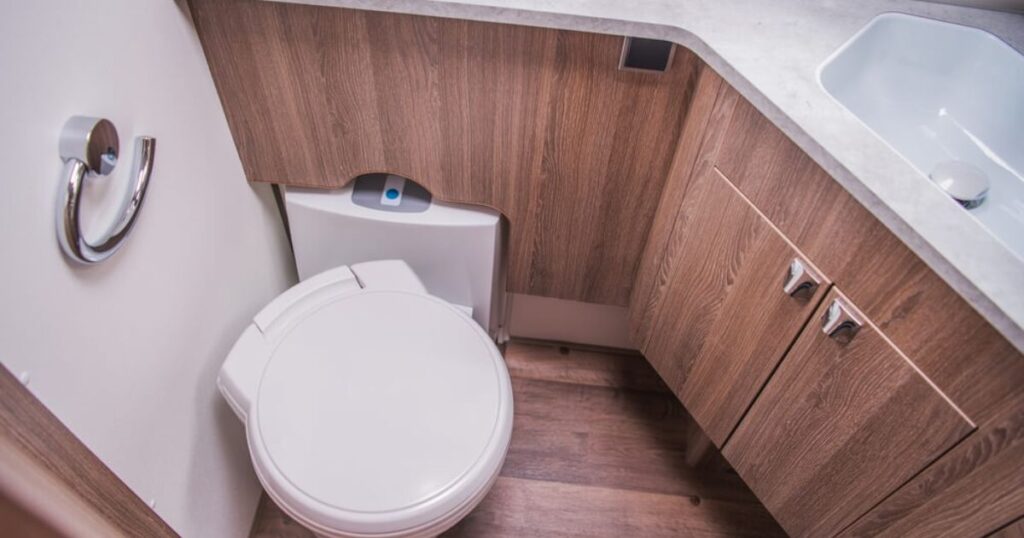
In my desperate quest to unclog my RV’s toilet, I tried a variety of other methods that provided limited or no success for my particular clogged situation but may prove useful for you:
Boiling Water: Pouring a few kettles of boiling water directly into the toilet bowl can sometimes help dissolve softer clogs. The force of the hot water may be enough to break up the clog, but it didn’t provide enough oomph for my hardened, solid clog.
Tank Rinse System: Many RVs include a tank rinse system with an intake valve to flush out the black water holding tank. Running water through the rinse system is great for general tank maintenance, but it couldn’t access or clear my clog situated much higher in the toilet drain pipe.
Dish Soap and Hot Water: Some RVers recommend pouring dish soap like Dawn into the toilet, followed by hot (not boiling) water. Let it sit for a while to work through the clog, and then attempt to flush. You can even drive around with this soapy mixture sloshing in hopes of lubrication. Alas, my clog didn’t budge despite these sudsy efforts.
Chemical RV Toilet Treatments: While enzymatic and other RV-safe toilet tank treatments like Happy Campers are excellent for regular tank maintenance, they lacked the power required to break through my obdurate clog. I tried letting various chemical treatments sit overnight with no success.
Other Ways to Unclog Your RV Toilet
If the clog proves too stubborn for these DIY methods, you may need to get a bit more creative or call in professional reinforcements:
Suction Method: Some RVers have reported success using their sewer hose to create suction directly into the black tank to pull out a clog. This involves closing off the gray tank, securing the sewer hose upright, and then quickly opening and closing the black tank valve while lifting the hose up and down. It can be tricky to execute solo.
Hire a Mobile RV Tech: For extremely tough toilet clogs, you may need to bite the bullet and hire a professional mobile RV repair technician. Companies like RV Flush Kings specialize in clearing stubborn RV tank and toilet clogs using high-pressure jetting equipment.
What I Do Not Recommend to Unclog Your RV Toilet
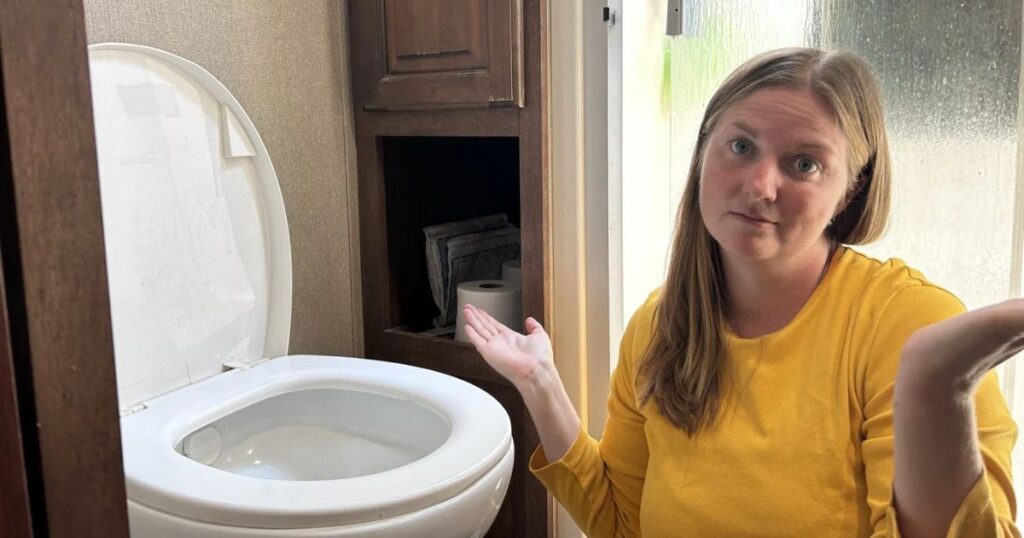
When faced with a clogged RV toilet, avoid the temptation to reach for typical household unclogging products and tools. While fine for residential plumbing, these can severely damage the more sensitive RV sewer system:
- Drano or other chemical drain cleaners containing harsh acids can degrade plastic piping, tanks and porcelain
- Standard toilet plungers are ill-advised as you can’t generate enough suction in the RV system. The excessive force required could also separate pipe joints and fittings.
Play it safe and stick to RV-approved clog clearing methods and products formulated specifically for RV black tanks and plumbing systems.
How to Prevent an RV Clog in the First Place
Of course, avoiding RV toilet clogs altogether should be every RVer’s goal. Proper preventative maintenance and mindful RV toilet usage can keep your black tank running smoothly:
Use RV/Septic Safe Toilet Paper: Rapidly dissolving 1-ply toilet paper is best to prevent buildup in tanks. While pricey “RV toilet paper” isn’t strictly required, avoid plush, slow-dissolving papers which are more likely to cause clogs. Some good affordable options are Scott’s Toilet Paper or other septic-safe brands.
Limit Toilet Paper Use: When roughin’ it without fast access to RV dump stations, play it ultra-safe and refrain from flushing ANY toilet paper down your RV toilet. Keep a small trashcan with odor remover bags inside the bathroom to discard used TP.
Flush with Plenty of Water: Use far more water than you would in a residential toilet – around 3/4 to 1 gallon per flush. The extra water flow helps prevent solid waste buildup. This may require moderating your water usage when boondocking off-grid.
Use Tank Rinse Systems: Most RVs include a handy tank rinse system to flush out the black water holding tank. Run a cycle with a dedicated non-potable rinse hose every few tank dumps.
Add RV-Approved Treatment: Using an enzyme-based treatment like Happy Campers RV Toilet Treatment helps break down waste and toilet paper while lubricating your sewage system.
What causes RV toilets to clog?
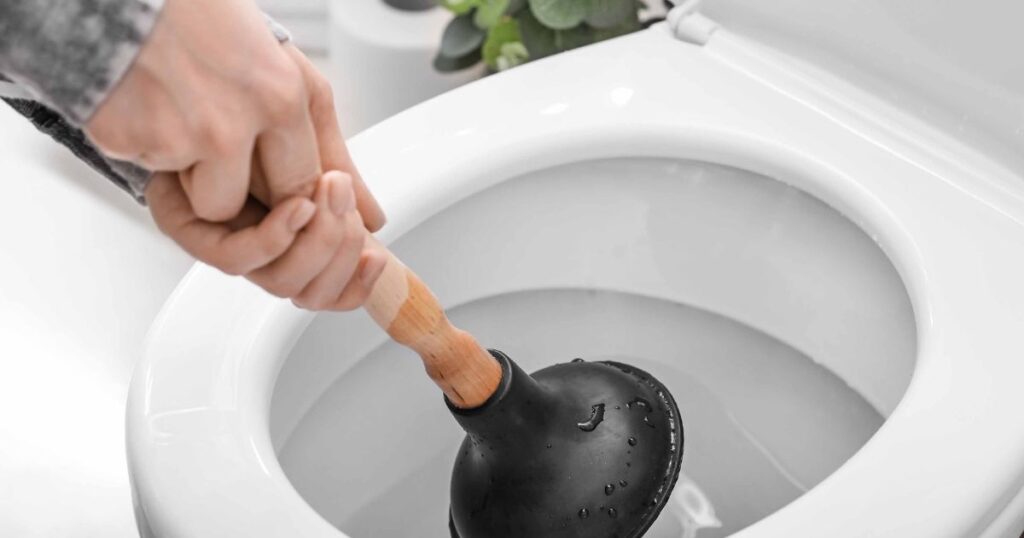
The three primary culprits behind stubborn RV toilet clogs are:
- Not using enough water to fully flush the toilet and plumbing lines. Solid waste and toilet paper can accumulate, especially around bends and joints.
- Using too much toilet paper, which can overwhelm the small RV black tank capacity if not limited.
- Wrong type of toilet paper that breaks down too slowly, leading to obstructive buildup over time.
Don’t make the mistake of thinking you can use the same plush, pillowy residential toilet paper in your RV. These ultra-thick 2-ply and 3-ply options simply don’t dissolve quickly enough in the RV’s black water holding tank before recompacting into clog-inducing wads.
Stick to designated RV/Marine toilet paper or other septic-safe bath tissue. As a general rule, the more broke down and dissolvable out of the package, the better. Some top options:
- Camco RV Toilet Paper (rapid-dissolving 1-ply)
- Scott Rapid Dissolving Bath Tissue (septic safe)
- Seventh Generation Bath Tissue (recycled 1-ply)
Even with RV-safe TP, don’t get lax about quantities or water usage. Flushing just a few too many sheets can lead to buildup over time.
Conclusion
No RVer wants to deal with the repulsive situation of a clogged toilet on their adventure. Unfortunately, these backups happen all too frequently if you don’t practice proper RV black tank maintenance.
By following the toilet unclogging methods and preventative measures outlined in this guide, you can save yourself incredible hassle and unspeakable stench. A few simple tips can go a long way:
- Use plenty of water when flushing
- Limit toilet paper usage as much as possible
- Buy rapid-dissolving RV/septic safe toilet paper
- Utilize tank rinse systems and enzyme treatments regularly
- Keep a tool like the Camco Swivel Stik on hand for tough clogs
With some preparation and the right clog-clearing tactics up your sleeve, you can quickly resolve toilet backups and get your RV bathroom back in working order. Because no camping trip should be derailed by a stubbornly clogged RV toilet.
I hope these tips and techniques allow you to proactively prevent sewage backups and handle any sticky situations that do pop up. Safe and clog-free travels.
